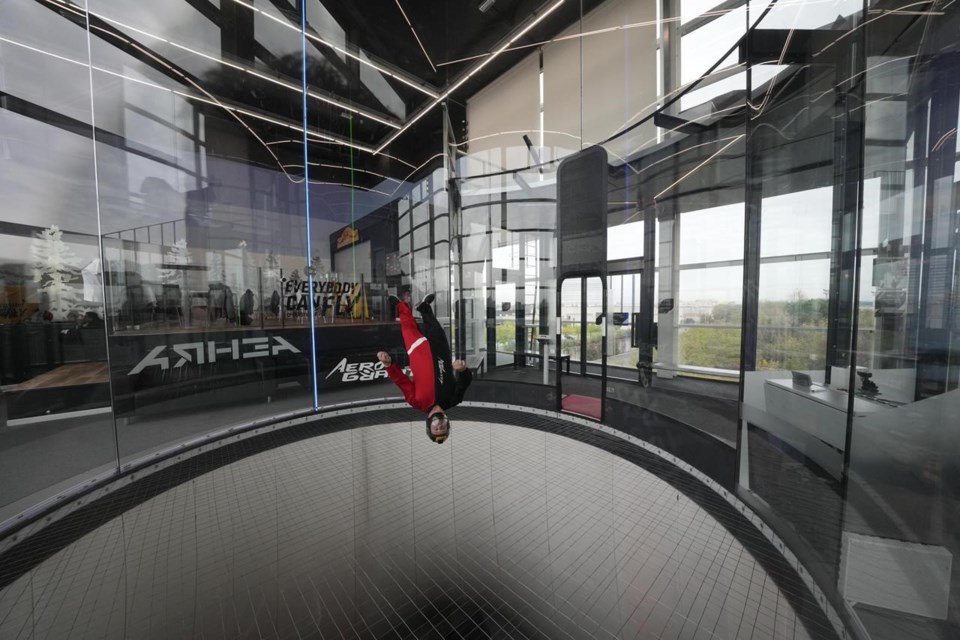MILAN (AP) — Elon Musk's Tesla paved the way nearly two decades ago. Now, the is littered with startups, inspired by a new era in mobility and drawn by the lower cost of building EVs compared with their fossil-fuel-guzzling forebears.
Gone are the billion-dollar investments that have made legacy auto-making into such a cash cow. Suppliers offer ready-made generic electric platforms and manufacturers can take on contracts for assembly — approaches that translate into savings on jobs and infrastructure.
What has been missing in the , according to a Milan-based startup, AEHRA, is a fresh design concept.
“Electric vehicles are looked at as being boring by the general public,” AEHRA CEO Hazim Nada said. "It is very easy to build an extremely powerful electric vehicle. It is not so easy to build an electric vehicle that has character. And I think that’s one of the elements that Italian-ness has to express.”
Nada has hired a former Lamborghini designer to help infuse his vehicles with Italian emotion and is emphasizing aerodynamics over performance.
But the company wants to enter an increasingly crowded market of EV startups and traditional carmakers that are being pushed to tackle car emissions that contribute to . Some startups have had little success.
AEHRA doesn't plan to launch its first vehicles — an SUV and a sedan — until mid-2025, with annual production starting at 20,000 to 25,000 vehicles. The ultra-premium cars also plan to come with a price tag to match — $160,000 to $180,000.
They are expected to and key European markets before expanding to China. That would follow an initial production investment of 700 million euros (dollars).
“We are not spending much,’’ Nada said. “This is due to the fact that we’re evolving the materials in such a way that the chain of production is very asset-light compared to the existing production ways.”
Nada earned most of the startup money trading crude oil in London and honed his passion for aerodynamics building the world’s largest vertical wind tunnel, AeroGravity, an attraction north of Milan that allows anyone to experience freefalling.
While AEHRA's cars are for a wealthy demographic as inflation bites the middle class and low-income earners, battery-powered vehicles generally have gained broader consumer acceptance and governments are nudging automakers away from internal combustion engines.
U.S. asset management and research firm Bernstein predicts one-quarter of all cars sold by 2025 will be battery electric or plug-in hybrids, doubling by 2030. It cites ambitious rollout schedules and regulatory support.
The European Union is by 2035, giving rise to new players with lower startup costs while potentially penalizing legacy carmakers that have invested billions in hybrids as bridge technologies.
Battery electric vehicles recorded the strongest growth of all fuel types in the third quarter, up 22% to over 259,000 units, according to the European Automotive Manufacturers Association. That accounts for a 12% market share.
The U.S. market share is slimmer, at around 6%, but Bernstein expects that to accelerate significantly with U.S. policies like tighter fuel efficiency standards.
As interest grows, dozens of new startups are entering a crowded market alongside and traditional carmakers, some with a century-long track records. The U.S. alone has 417 EV startups, according to research by Bernstein, some of them providing cautionary tales.
California-based Faraday Future has invested billions in an electric car it has yet to build. Others, like Lucid or Rivian, which have gotten into production, have struggled to get components due to global supply chain shortages, said Sam Abuelsamid, principal e-mobility analyst at Guidehouse Insights.
At the same time, Chinese manufacturers are making inroads in Europe, with an eye on the U.S. market. In the Italian luxury market, Ferrari and Lamborghini have announced plans for their own EVs.
“It’s going to be much more difficult now than it was a decade ago for Tesla when they were basically the only brand doing a premium high-performance EV. And now there’s dozens of brands doing this, competing for that same dollar,” Abuelsamid said.
Another risk is service and support, especially when launching across big geographies without built-in sales and service networks, Abuelsamid said.
AEHRA’s plans call for mostly online sales and regional service centers, Nada said.
Design is where AEHRA hopes to grab market attention — moving away from the architecture of an internal combustion engine that Nada said has been conditioned by thermal management.
The AEHRA vehicle body is moving away from edges that have defined the muscularity of supercars in recent years and is returning to a gentler line reminiscent of pre-war car design.
This aesthetic shift improves the car’s aerodynamics, which will help extend range, according to AEHRA chief design officer Filippo Perini. Reconstructing the classic internal architecture will create more cabin space for passenger comfort, he added.
Nada is convinced that young consumers are not so attached to their previous generations’ nameplates and will be willing to buy a car from a new player that offers an emotional change.
“We’re not in the market of Ferrari, we’re not in the market of Lambo,’’ he said. “Our vehicles are not the same segment of Tesla. We think we can coexist."
___
Follow the AP’s coverage of electric vehicles at
Colleen Barry, The Associated Press




